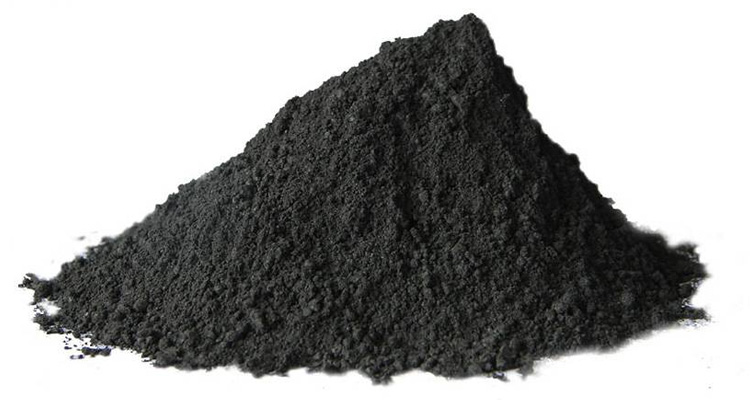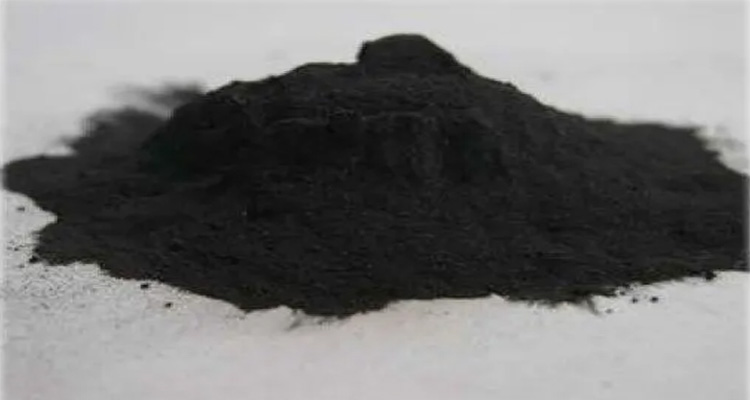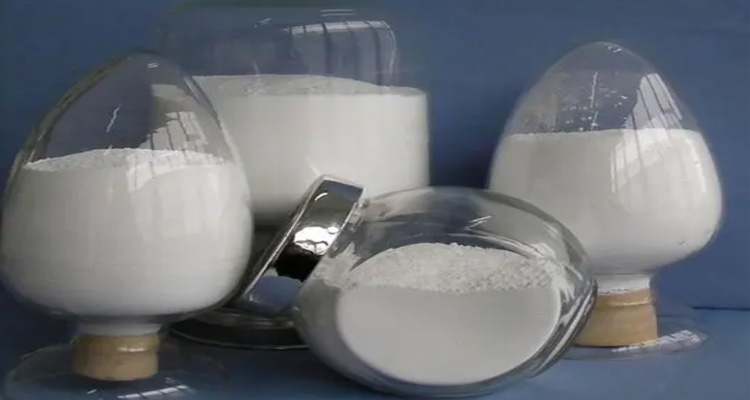Lithium-ion battery, as one of the most mature electrochemical energy storage carriers in commercial application, has been widely used in consumer electronics, transportation vehicles and energy storage power stations. According to the structural classification of negative electrode materials, this paper briefly introduces the structural characteristics, performance characteristics, improvement direction and other aspects of the research and development of various negative electrode materials for lithium ion batteries, focusing on the development status and future trend of the next generation of high energy density battery negative electrode materials.
Carbon materials are the most widely used and common anode materials commercially, mainly including natural graphite, artificial graphite, hard carbon, soft carbon, MCMB(intermediate phase carbon microspheres). Before the maturity of the next generation of anode materials, carbon materials, especially graphite materials, will still be the first choice and mainstream anode materials.
1.1 Graphite
According to its raw materials and processing technology, graphite is divided into natural graphite and artificial graphite, because of its low lithium potential, high first efficiency, good cycle stability, low cost and other advantages, graphite has become the ideal anode material in lithium ion battery applications. Natural graphite: Generally using natural flake graphite as raw material, after modification to make spherical natural graphite use. Although natural graphite is widely used, it has several disadvantages: (1) Natural graphite has many surface defects, large specific surface area, and low initial efficiency; Using PC-based electrolyte, there is serious solvated lithium ion co-embedding phenomenon, leading to graphite expansion and stripping, battery performance failure; Natural graphite has strong anisotropy, lithium ions can only be embedded from the end face, the multiplier performance is poor easy to analyze lithium. Modification of natural graphite :In view of the surface defects of natural graphite and the poor tolerance of electrolyte, different surfactants are used to modify it. CHENG et al. improved the ratio performance of natural graphite by changing the surface of pore structure and increasing the surface pores and lithium embedding path through sintering in high temperature anaerobic atmosphere after etching of strong alkali (KOH) aqueous solution. WU et al. used different strong oxidant solutions for oxidation treatment, passivated surface active potential and reducing functional groups, and improved the primary efficiency of natural graphite. MATSUMOTU et al. used ClF3 to fluorinate natural graphite, and found that the charge-discharge ratio and cycle life were effectively improved. Another treatment method is coating modification, which covers amorphous carbon of natural graphite to construct "core-shell" structural particles. Usually, the carbon source of amorphous carbon is low-temperature pyrolytic carbon materials such as asphalt and phenolic resin. The existence of carbon layer can not only isolate the direct contact of electrolyte, reduce the active point on the surface of particles and reduce the specific surface area, but also, due to the large layer spacing of carbon layer, It can also reduce the interface impedance and improve the embedding diffusion ability of lithium ion. (2) In view of the strong anisotropy of natural graphite, industrial production often uses mechanical treatment means to spherical shape of particle morphology, air shaping machine using wind impact way to make particles friction, cutting particle edges and corners, this method will not introduce doping impurities, high spheroidization efficiency, but will lead to a large number of particle pulverization, low yield. The mechanical fusion machine uses the material to rotate at high speed in the rotor, adhere to the wall under the action of centrifugal force, and pass through the rotor and stator extrusion head at high speed. At this moment, the material is subjected to extrusion pressure and shear force at the same time. Under the action of friction between particles and particles and between particles and equipment, the surface presents a mechanical melting state to achieve the purpose of spherification. The natural graphite was spherically treated, the particle size of D50 was 15 ~ 20 μm, the first efficiency and cycle performance were improved obviously, and the magnification performance was greatly increased. Artificial graphite: Generally using dense petroleum coke or needle coke as a precursor system, to avoid the surface defects of natural graphite, but there are still problems due to crystal anisotropy resulting in poor rate performance, low temperature performance, charging easy lithium analysis and other problems. The modification way of artificial graphite is different from that of natural graphite. Generally, the purpose of reducing the orientation of graphite grains (OI value) is achieved through the reorganization of particle structure. The needle coke precursor with diameter of 8 ~ 10 μm is usually selected, and the asphalt and other easy graphitization materials are used as the carbon source of the binder. Through the roller furnace treatment, several needle coke particles are bonded, and the secondary particles with diameter of D50 range of 14 ~ 18 μm are prepared to complete the graphitization, which effectively reduces the OI value of the material.

1.2 Hard Carbon
Hard carbon, also known as difficult to graphitize carbon material, is difficult to graphitize at a high temperature above 2500 ℃. It is generally obtained by heat treatment of the precursor in the range of 500 ~ 1200 ℃. Common hard carbon are resin carbon, organic polymer pyrolytic carbon, carbon black, biomass carbon and other four categories, phenolic resin pyrolysis at 800 ℃, can be obtained hard carbon material, its first charge gram capacity can reach 800mAh/g, layer spacing d002 > 0.37nm (stone ink is 0.3354 nm). Large layer spacing is conducive to the embedding and deembedding of lithium ions, so hard carbon has excellent charge-discharge performance and is becoming a new research focus of anode materials. However, hard carbon has high irreversible capacity for the first time, lagging voltage plateau, low compaction density and easy gas production, which can not be ignored. The application of hard carbon mainly considers the matching with positive electrode materials. LIU et al. studied the performance of lithium-ion batteries with lithium-rich materials as positive electrode materials and hard carbon as negative electrode materials, and found that the matching of the two materials helps to reduce the first irreversible capacity of each. The lithium-ion battery prepared by LIAO et al with hard carbon as negative electrode material and LFP as positive electrode material shows good multiplier performance and cycle performance, and the capacity retention rate of 2000 cycles at 10 ℃ still exceeds 60%.


2.1 Advantages and disadvantages of materials
Lithium titanate material: Lithium titanate (LTO) is a composite oxide composed of lithium metal and low potential transition metal titanium, which belongs to the spinel type solid solution of AB2X4 series. Lithium titanate theoretical gram capacity 175 mAh/g, the actual gram capacity is greater than 160 mAh/g, is currently one of the industrialization of anode materials. The unique advantages are: (1) zero strain - lithium titanate cell parameter a= 0.836nm, the embedding and removal of lithium ions during charging and discharging has almost no effect on its crystal structure, which avoids the structural change caused by material expansion in the process of charging and discharging, and thus has extremely high electrochemical stability and cycle life; (2) No risk of lithium evolution -- lithium titanate to lithium potential up to 1.55V, the first charge does not form SEI film, high first efficiency, good thermal stability, low interface impedance, low temperature charging performance, can be charged at -40℃; (3) Three-dimensional fast ion conductor lithium titanate is a three-dimensional spinel structure. The space of lithium insertion is much larger than the graphite layer spacing, and the ionic conductance is one order of magnitude higher than that of the graphite material, which is especially suitable for charging and discharging at high rate. Disadvantages: lithium titanate also because of low gram capacity, low voltage platform resulting in low battery specific energy; Nanometer material, strong hygroscopicity, leading to high temperature gas production, high temperature cycle is poor; The material manufacturing process is complicated and the cost is extremely high. The cost of the cell is more than 3 times that of the same energy lithium iron phosphate battery.
2.2 Application and precautions of materials
Application field: The advantages and disadvantages of lithium titanate are very obvious, and the performance is more extreme, so it is the right application method to apply in a specific subdivision field and give full play to its strengths. At present, lithium titanate battery is mainly used in urban pure electric BRT bus, electric hybrid bus, electric frequency modulation peak regulation auxiliary services and other fields. Note: In view of the serious problem of high temperature gas production of lithium titanate, the current industrial production needs to strictly control the environmental humidity and the introduction of water during operation; New additives are added to the electrolyte to inhibit the side reaction between lithium titanate and electrolyte interface. Improve the purity of raw materials to avoid the introduction of impurities in the manufacturing process.
3.1 Research hotspot and improvement direction
Research focus: Silicon is considered to be one of the most promising anode materials, its theoretical gram capacity can reach 4200 mAh/g, more than 10 times the graphite material, at the same time, Si lithium potential is higher than carbon materials, charging lithium analysis risk is small, more safe. At present, the research focus of silicon based materials is divided into two directions, namely nano silicon carbon materials and silicon oxygen (SiOx) anode materials. Application problems: (1) The huge volume expansion and contraction caused by lithium deintercalation leads to particle crushing and pulverization and electrode structure damage, resulting in electrochemical performance failure; ② Due to the continuous destruction and recombination of SEI film caused by expansion and contraction, continuous consumption of electrolyte and reversible lithium source, the electrode capacity attenuation is accelerated, and the charging and discharging efficiency is sharply reduced. Improvement direction: In view of the above problems, scholars have been exploring new ways to improve the performance of silicon anode materials in recent years. The current mainstream direction is to use graphite as the matrix, add 5%-10% nano silicon or SiOx composite material and carbon coating, inhibit particle volume change and improve cycle stability.
3.2 nano silicon carbon materials
Material design: The initial research on nano-silicon carbon materials mainly focused on the low capacity direction of 400 ~ 500 m Ah/g, and the material structure mainly includes core-shell type and embedded type. At the beginning of the design, Li Hong's team considered increasing the graphite content of the matrix as much as possible, alleviating the lithium stripping strain and reducing the rebound. In addition, the type, content and sintering process of the surface coating agent were optimized to improve the integrity of the coating layer, and the liquid phase dispersion process was introduced to improve the dispersion uniformity and better play the size effect of nano silicon. Optimization of battery chemistry system: In addition to material design, the battery chemistry system is optimized by studying binder, conductive agent and electrolyte. The capacity retention rate of 400m Ah/g silicon carbon material for 600 cycles is more than 80%. On this basis, the particle structure is optimized to develop high-power materials. Lithium-ion batteries made of low-capacity materials have been mass-produced in the industry, but the actual results show very little improvement in battery specific energy. Preparation process of doped nano-silicon: Due to the small graphite content of high-capacity silicon carbon anode, the research focuses on the problems of cycle stability and poor charging and discharging efficiency caused by the volume expansion of silicon particles, and also needs to deal with the new problems of difficult dispersion and poor machining performance. Starting from raw materials, Li Hong's research group has developed a set of low-cost and high-efficiency preparation process of doped nano-silicon. With the help of gas phase coating method, the specific surface area of the material is reduced and its surface characteristics and machining properties are improved. Mixed with graphite made of 500 mAh/g anode material, in the application process to reduce the appropriate compaction density, 500 cycle capacity retention rate can reach 80%. Preparation process of composite materials: Li Hong's team has also developed a large-scale preparation process of silicon-carbon composite materials, using micro-nano composite structure, so that the nano silicon is evenly dispersed in a three-dimensional conductive network. In cooperation with Ningbo Institute of Materials, a 600 mAh/g anode material was mixed with graphite, and a lithium-rich material was selected as the positive electrode. The energy density of the soft-pack battery was developed as high as 374 Wh/kg.
Contact: Jason Wang
Phone: 13580725992
E-mail: sales@aooser.com
Whatsapp:13580725992
Add: No.429 Guangming Road, Shenzhen City, Guangdong Province
We chat
